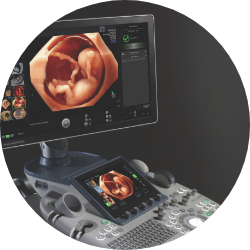Most common causes of pelvic pain
Published on 03/20/20
Nearly 15% of women have suffered ongoing pelvic pain at some point in their lives. It can be a normal part of your menstrual cycle, but if it’s severe and interferes with your daily life, you shouldn’t ignore it.Pelvic pain is a general term used to describe pain that occurs in the area below your belly button and above your legs. It can feel like:
- A dull ache
- Sharp pain
- Cramping
- Pressure in the pelvis
Chronic pelvic pain can also cause painful bowel movements and urination, or even make sex painful. In some women, pelvic pain causes low back pain and nausea.
Pelvic pain can be a side effect of another condition, or it can be a condition itself. Signs of common conditions associated with pelvic pain are often similar, which can make proper diagnosis challenging.
At Rosh Maternal & Fetal Medicine, our team of experts is highly trained in diagnosing and treating pelvic pain. If you’re suffering from pelvic pain, make an appointment at one of our offices located across Midtown East Manhattan in New York City. Learn more about some of the most common causes of pelvic pain here.
Uterine fibroids
Uterine fibroids are growths that develop on your uterus. They’re almost always noncancerous and are common among women of childbearing age. Small uterine fibroids usually don’t cause symptoms to develop.
Women with large or numerous fibroids can experience pelvic pain, heavy menstrual periods, and urinary issues. Large fibroids can cause an uncomfortable sensation of pressure in the lower abdomen.
Endometriosis
Endometriosis is a common condition that occurs when the lining of your uterus, known as endometrium, grows outside the uterus. If you have endometriosis, the uterine lining may grow on your ovaries, bladder, or rectum.
Endometriosis can cause severe cramps, painful sex, lower back pain, and more. Because the endometrium can’t break down properly, blood can get trapped in your abdomen and cause scarring and cysts.
Ovarian cysts
Ovarian cysts are small pockets of fluid that develop in or on your ovary. Most cysts don’t cause pain and naturally go away on their own within a few months. However, large cysts can cause significant pain and bloating in the abdomen.
Cysts can rupture, causing sudden intense pain. If you experience pelvic pain, along with vomiting, lightheadedness, or cold skin, seek medical attention immediately. Cysts can develop as part of another condition, such as endometriosis or polycystic ovarian syndrome (PCOS).
Pelvic inflammatory disease
Pelvic inflammatory disease (PID) can cause chronic pelvic pain. PID is an infection that causes inflammation and pain in your uterus, fallopian tubes, or ovaries. Often, the infection enters your body through your vagina during sex. It can be caused by a sexually transmitted disease, such as gonorrhea or chlamydia.
Signs of PID include pelvic pain, irregular periods, painful sex, and more. If left untreated, PID can impact fertility and make it more challenging to get pregnant.
You shouldn’t have to live in silence with pelvic pain. Talk to our team by phone or book an appointment online to get started finding relief.




